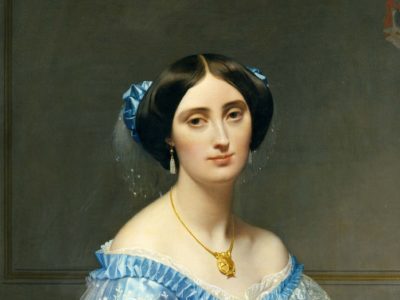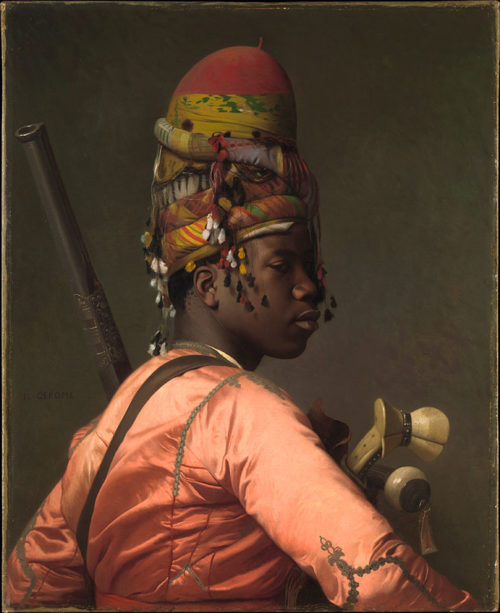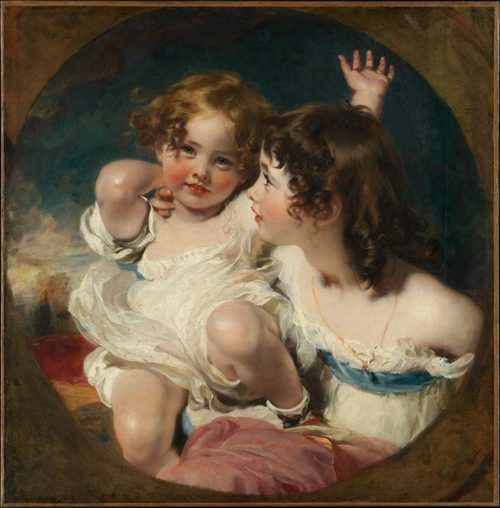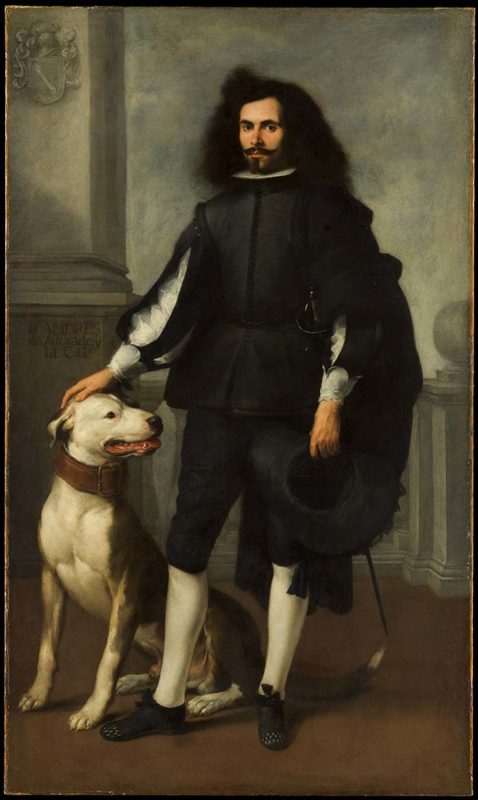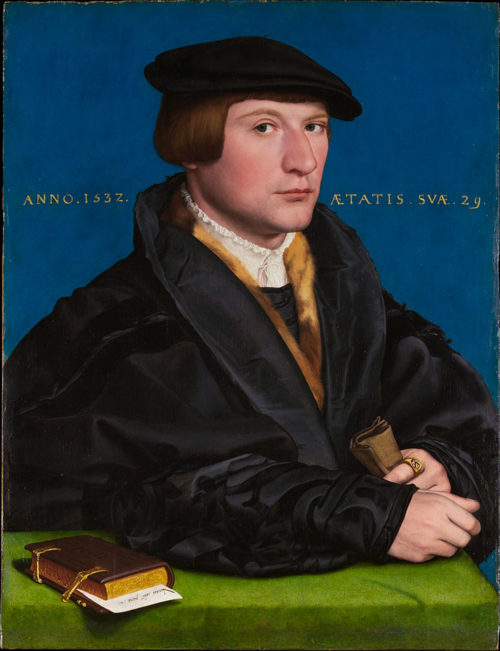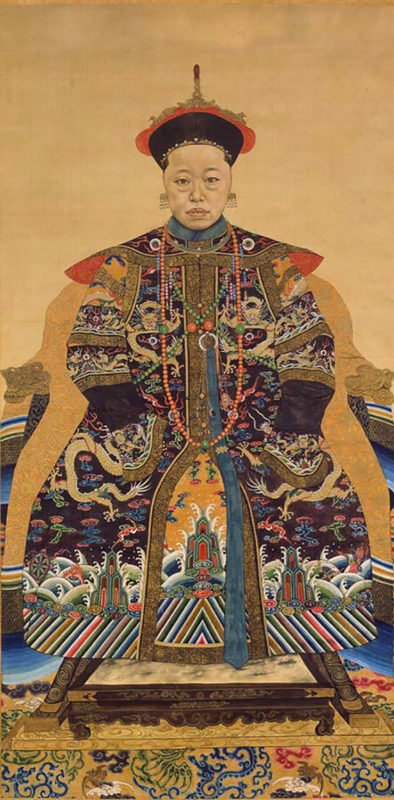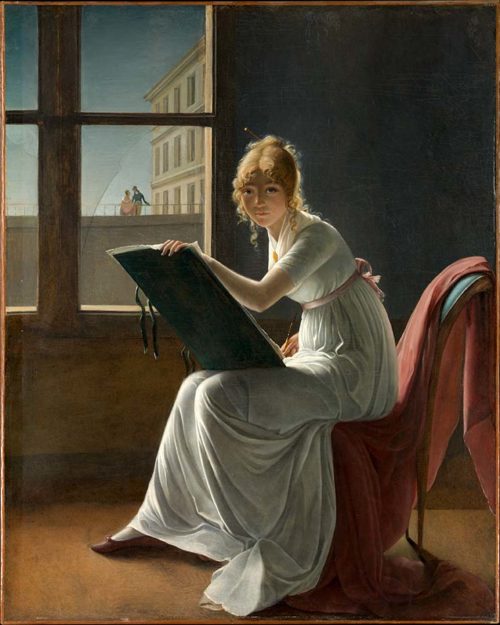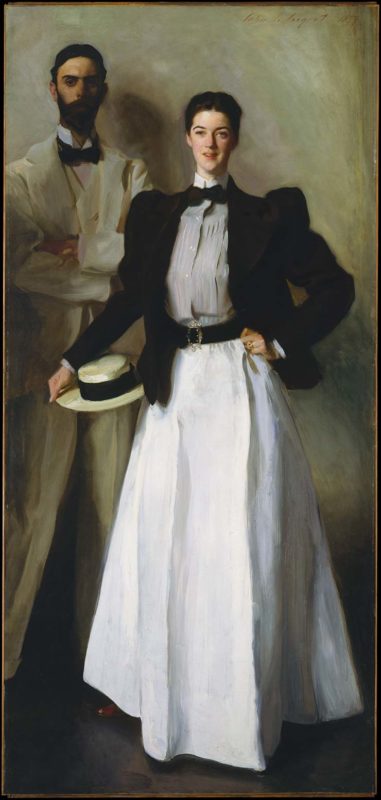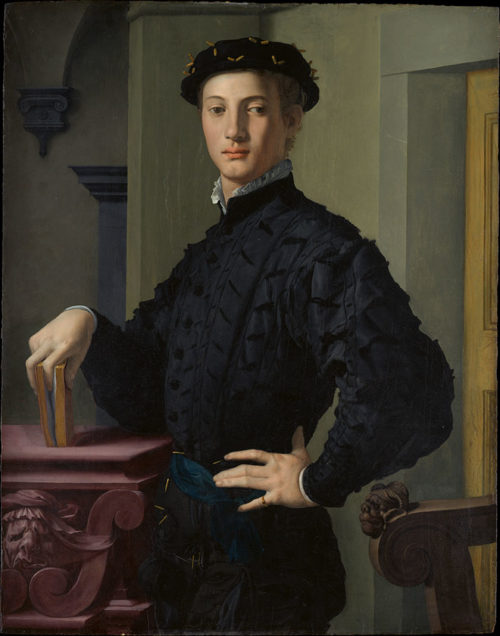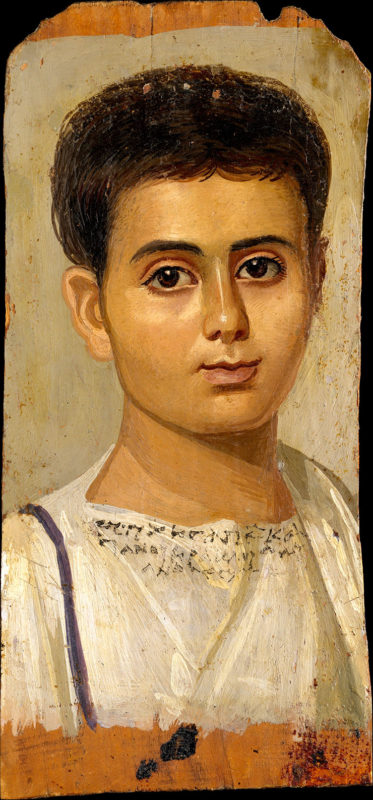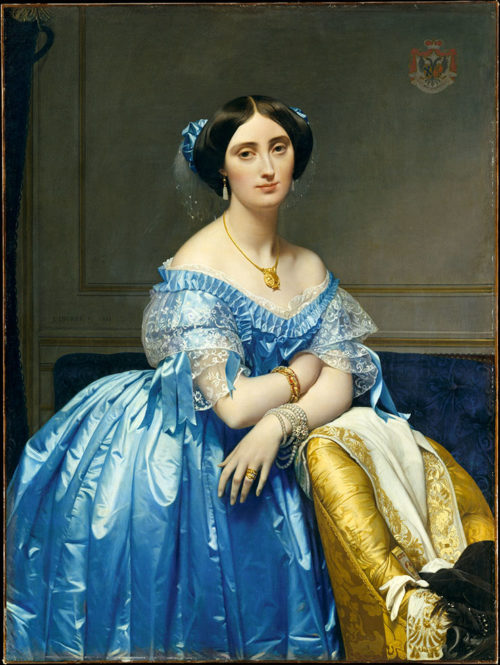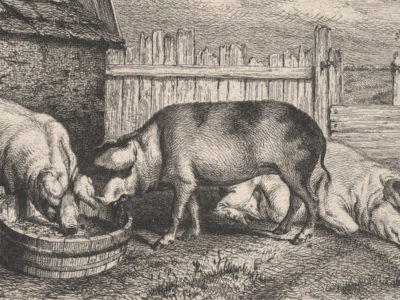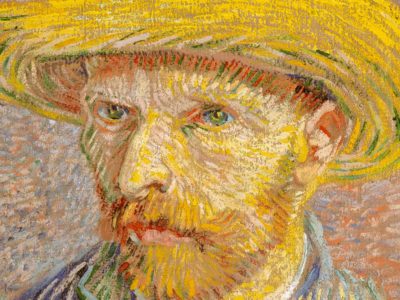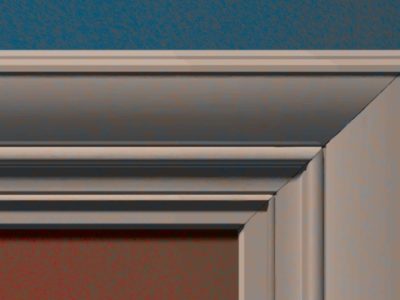Feel free to stare at these ladies and gents all day long. They won’t mind.*
It’s often been said that the eyes are the window to the soul. But get caught looking into a stranger’s window and things can suddenly become awkward.
What’s great about portraits is that you can stare at them for minutes — even hours — imagining who the person was by their expression, their pose, the way they’re dressed, and sometimes the environment surrounding them.
Of course, not everyone enjoys people watching. While strolling through the Metropolitan Museum of Art, my nephew once exclaimed, “Do all the paintings have people in them? Aren’t there paintings of just trees?” My nephew clearly is a landscapes person.
If you, however, enjoy staring at your fellow humans, I present the following ten examples of outstanding portrait paintings found here at The Met in New York City (no self-portraits this time, they will be included on their own list).
*The Met, however, will kick you out 15 minutes before the museum’s closing time.
1. Don Andrés de Andrade y la Cal
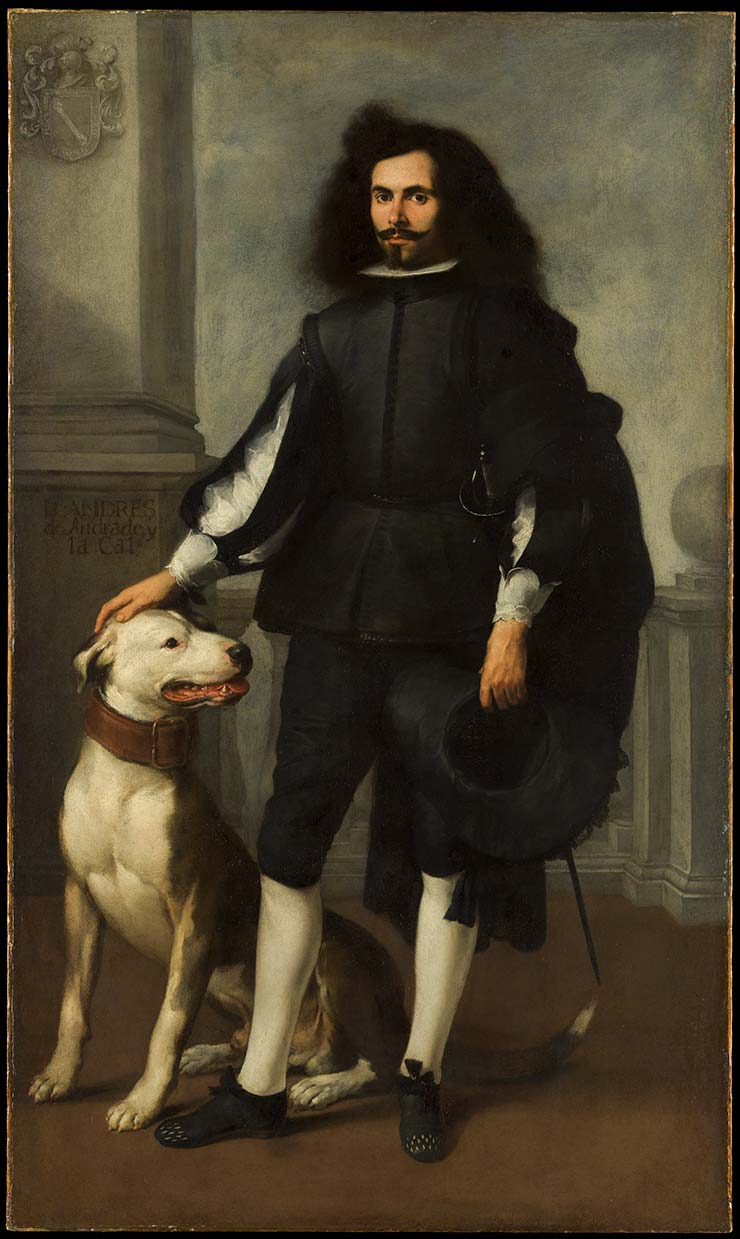
Don Andrés was the marshall of processions in the cathedral of Seville (in other words, he was responsible for keeping the peace while people got their church on). Since his mastiff dog appears happy sitting by his side, I’m inclined to imagine that the marshall was a decent guy.
As an artist, what I particularly love about this full-length portrait is how Murillo has painted Don Andrés’ frizzy hair to seemingly dissolve into the background. Bravo.
2. The Calmady Children

This portrait of little Emily and her big sister Laura Anne is the epitome of childhood exuberance and innocence. Was Emily’s cheeks ever that rosy? Did the sisterly bond displayed here continue throughout their lives? It’s fun to gaze upon this painting and imagine.
3. Portrait of a Young Man
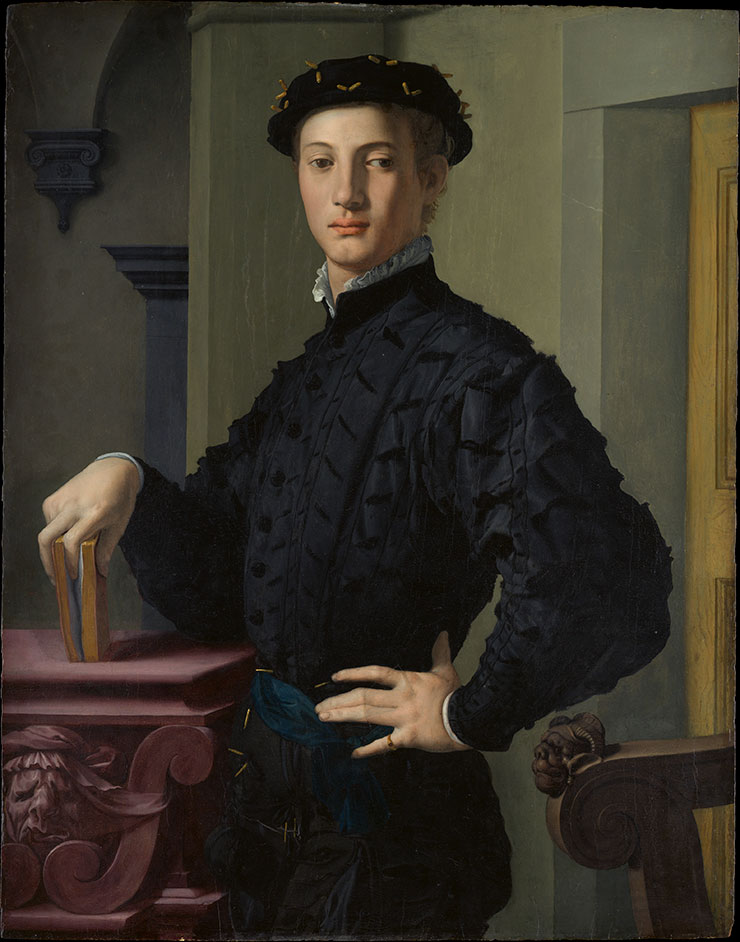
This young man was likely one of Bronzino’s literary friends in Florence. He stands aloof — which is common in Bronzino portraits — propped up like a peacock in his fashionable black satin doublet covered with slashings.
But when I study the young man’s face more, his eyes suggest that he’s lost in thought and possibly sad about something. Not quite as cocky as his stance initially suggests.
4. Marie Joséphine Charlotte du Val d’Ognes
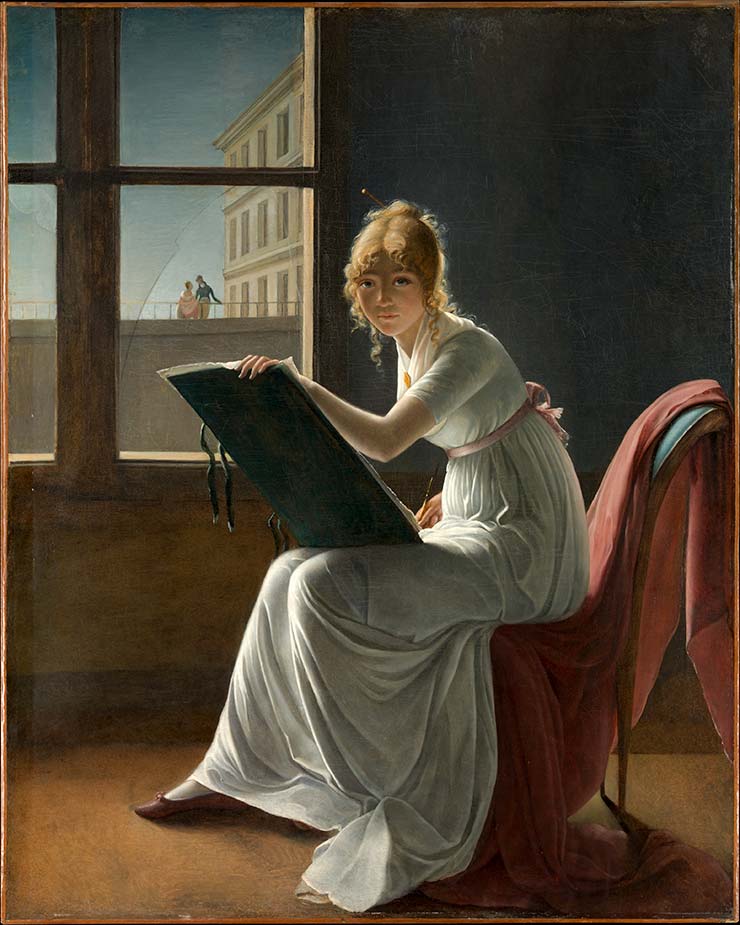
What is immediately striking about this French neoclassical portrait is the dramatic backlighting that illuminates the young woman as she looks up at us from her drawing.
Have we interrupted her? Has she paused to study us as the subject of her drawing? All right, Ms. d’Ognes, I’m ready for my close-up.
5. Bashi-Bazouk
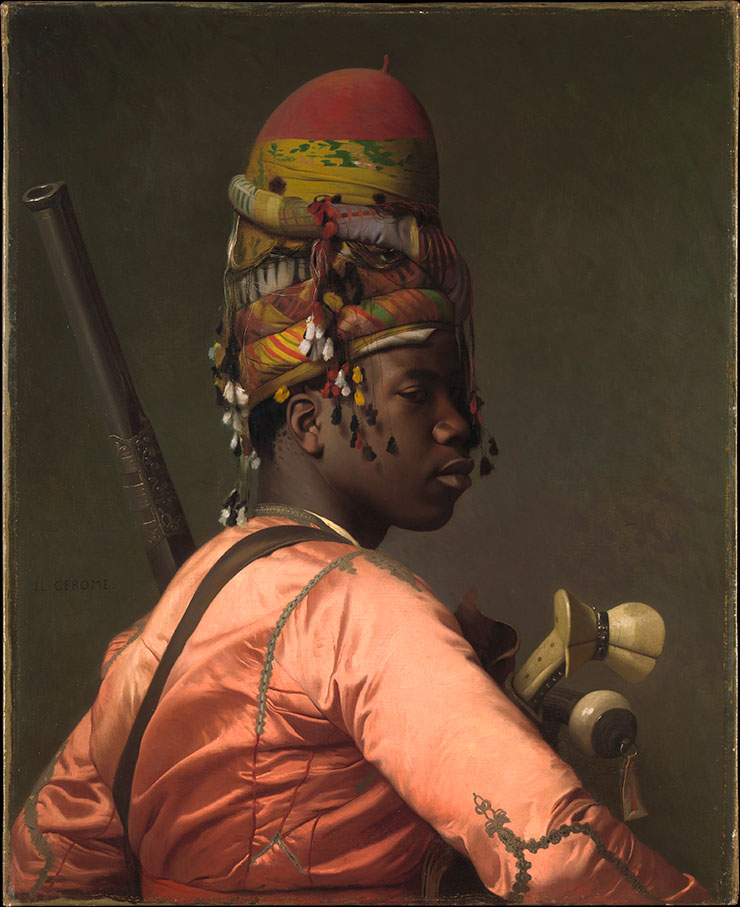
In case you’re wondering, Bashi-Bazouk refers to irregular soldiers in the Ottoman army. They were unpaid, so they fought ferociously for plunder.
Gérôme hired this studio model and dressed him up using textiles that he acquired during one of his recent expeditions to the Near East. The model is glancing sideways towards us, but not at us. Since he’s being upstaged by the portrait’s staging and fineries, it’s hard to read into the character that the model is playing. But he looks good doing it.
6. Mr. and Mrs. I. N. Phelps Stokes
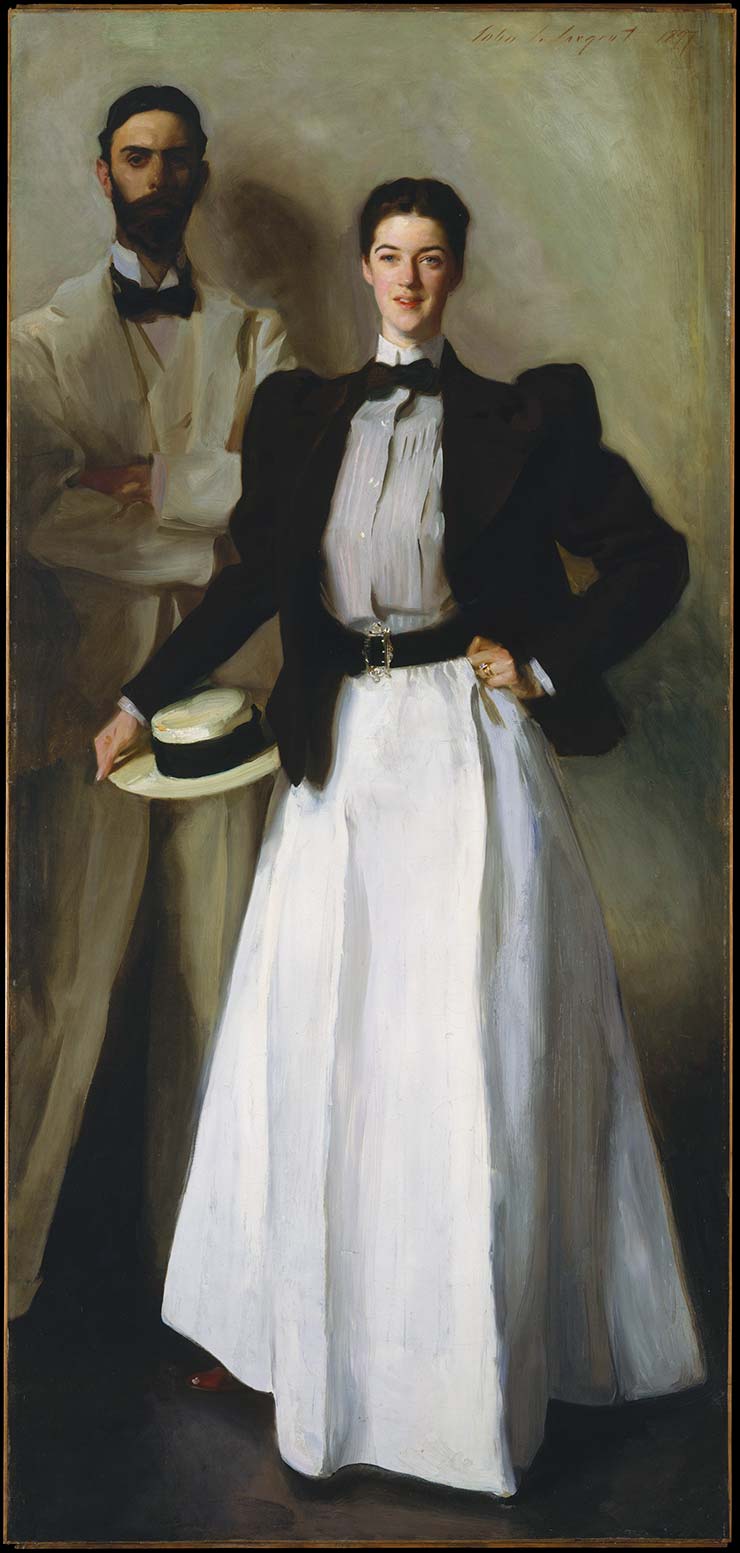
You probably expected Sargent’s portrait of Madame X to be listed here. But I’m fond of this double-portrait that was painted after the Madame X scandal (which caused Sargent’s portrait commissions in Europe to dry up).
This portrait was a wedding gift to the New York couple. The bride, Edith Minturn, was meant to be shown along with a Great Dane. But when the dog became unavailable, the groom chose to step in.
I enjoy imagining why the dog became “unavailable” (I’m rooting for a “poker game”). The groom’s body language in the background suggests that he had some regrets about taking the dog’s place. Meanwhile, Edith shines vivaciously in the foreground.
7. Hermann von Wedigh III
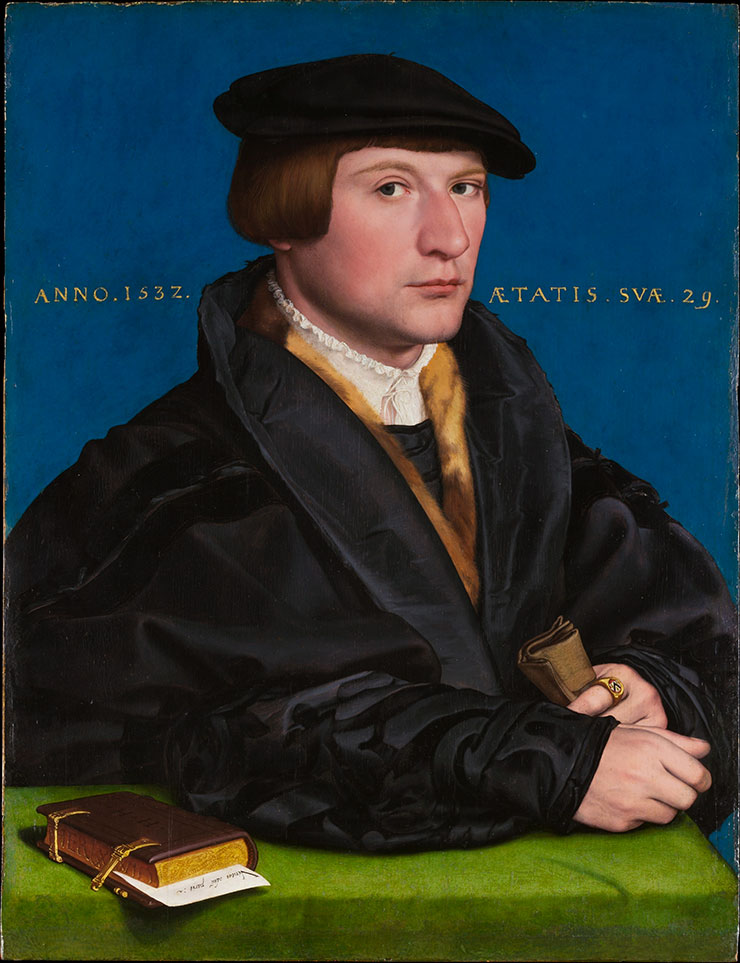
This is a small portrait. Hermann was a German merchant working in England. It’s possible that this painting was kept by the Wedigh family back in Germany to comfort them while Hermann was away.
In Holbein’s assured rendering of Hermann’s facial features, I read a no-nonsense sternness into the merchant’s countenance. Meanwhile, his billowy coat is curiously big.
8. Imperial Portrait
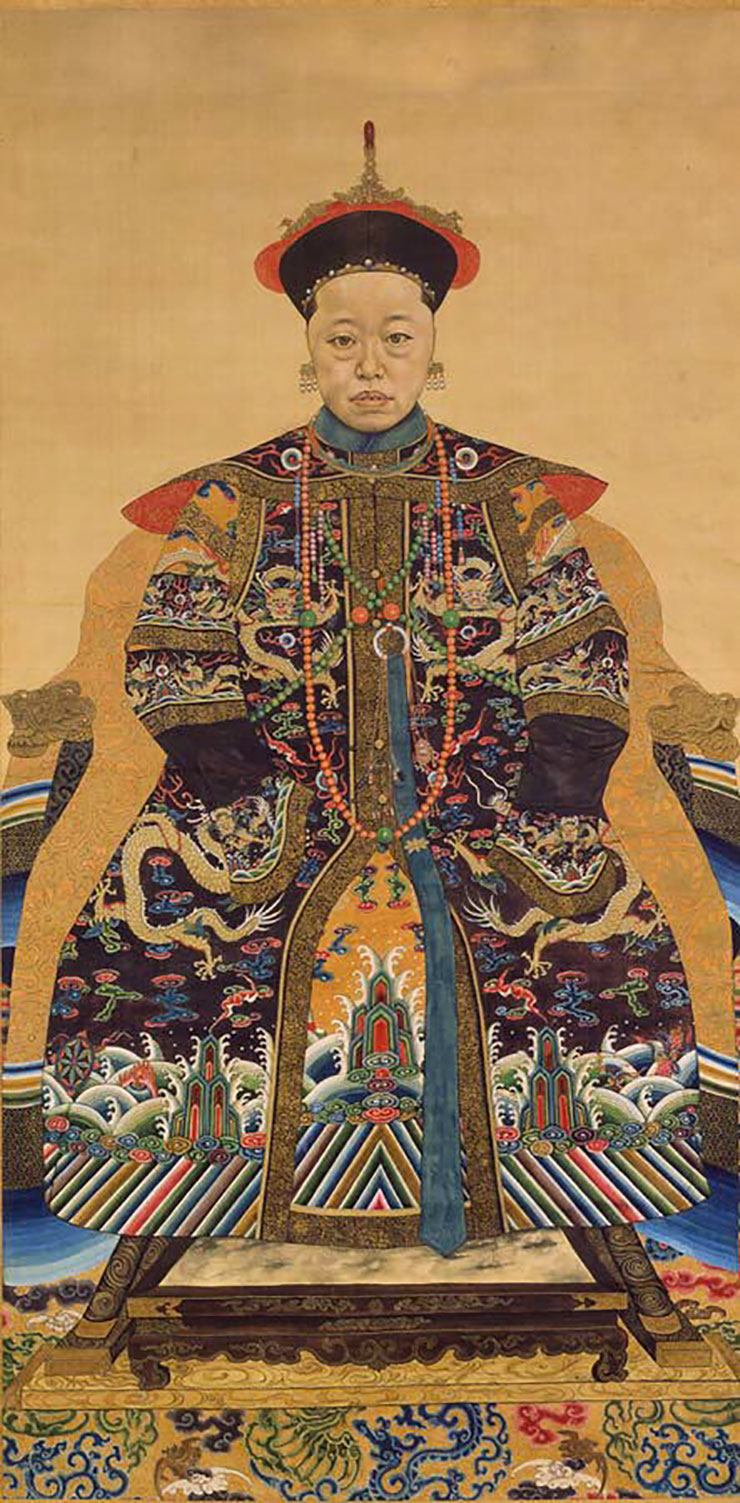
There’s a fascinating juxtaposition in this portrait between the woman’s carefully rendered 3-dimensional face and the flattened, designed space surrounding her (if you’re familiar with the Austrian painter Gustav Klimt, this is a forerunner to what he would do in his portraits).
While this court member’s straight on seated pose definitely makes her appear “imperial” — and the design and colors of her outfit and furnishings are impressively lavish — the expression on her face seems more yielding.
Note: being a work on paper, this portrait is only occasionally on view to protect it from the cumulative damage from light. Click on the link above to check its current status at The Met.
9. Portrait of the Boy Eutyches
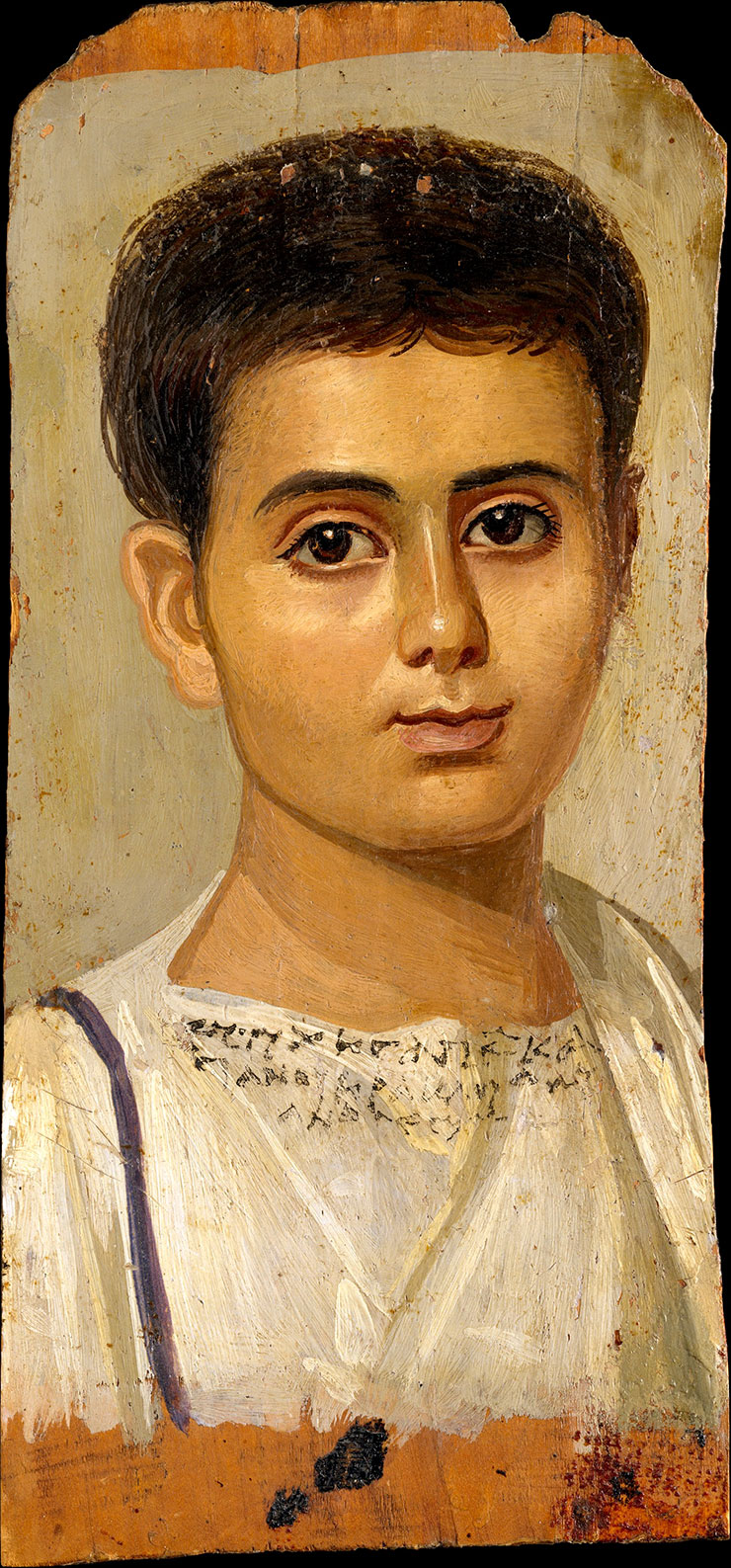
While this is the oldest and least technically proficient portrait among this group, it’s still engaging.
Eutyches’ big, dark eyes look kindly off to the side of us. He has a slight “Mona Lisa” smile upon his face. It’s easy to imagine that he was a thoughtful young boy — possibly mischievous at times.
Sadly, this portrait is a funerary mask that was placed over the facial area of Eutyches’ mummified body.
10. Princesse de Broglie
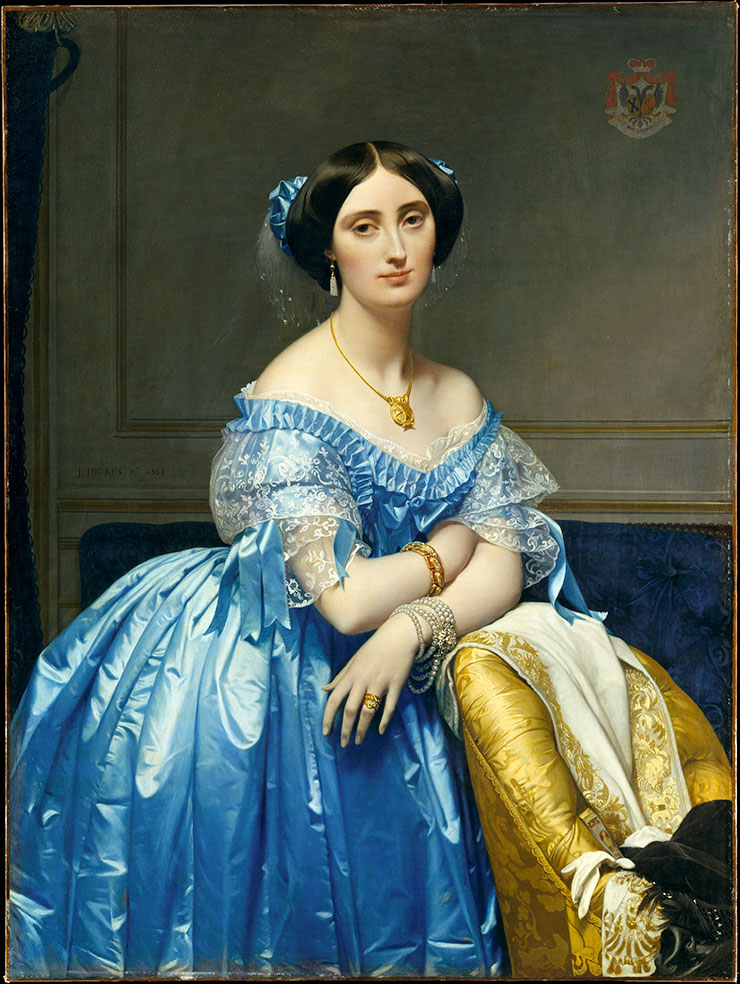
Even without seeing the word “Princesse” in the title, we can tell that this woman was materially well off in life. Look at her dress, jewelry, and furnishings. The French artist Ingres was a master at rendering them all.
Meanwhile, the Princesse gazes wistfully down and off to the side. Was there somewhere she wished to be, besides posing for this portrait? Was there something more that she desired from her surroundings?
While we could try asking her, the one thing portrait paintings can’t do is answer back.
Gallery
Thank you to the Metropolitan Museum of Art for providing the Open Access images used in this article. Some images were obtained through the Creative Commons.
Please note that artwork rotates in and out of view at The Met. To learn whether a portrait featured here is currently on view, click on the painting’s title in the caption under its full-sized image.

